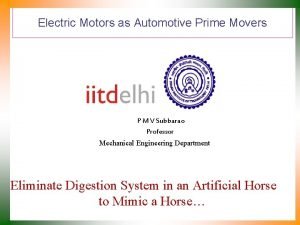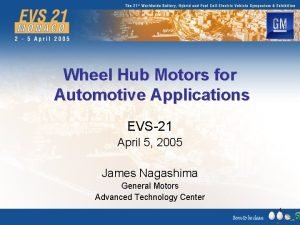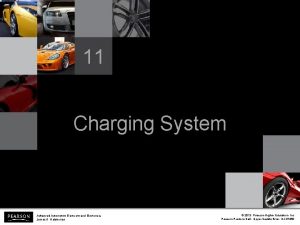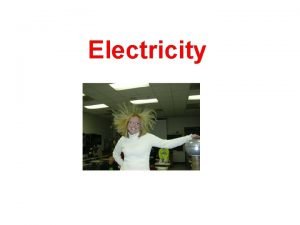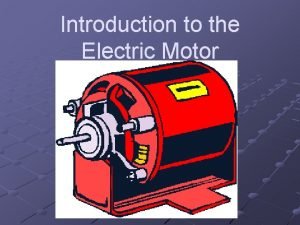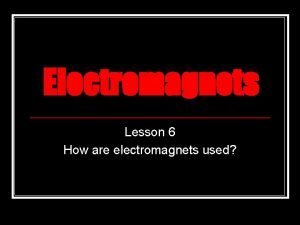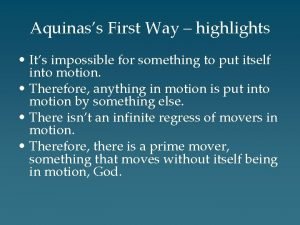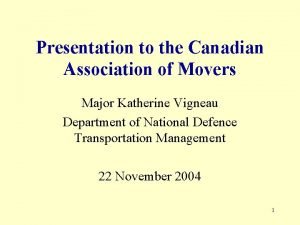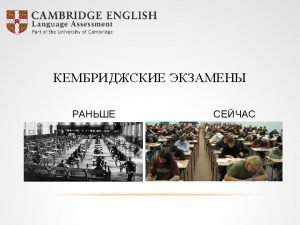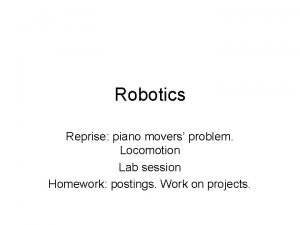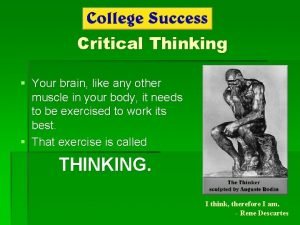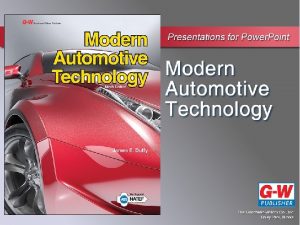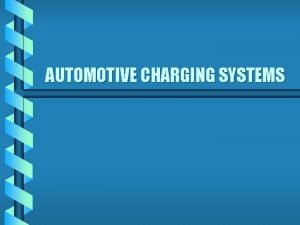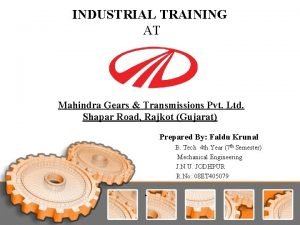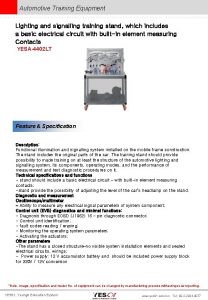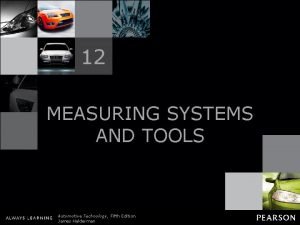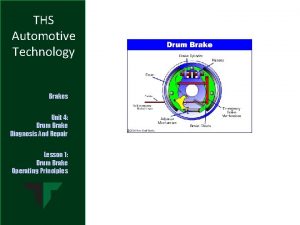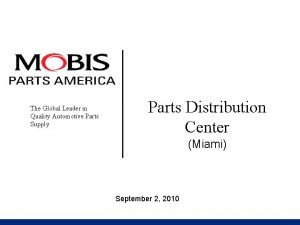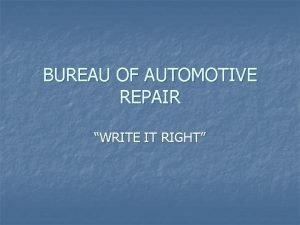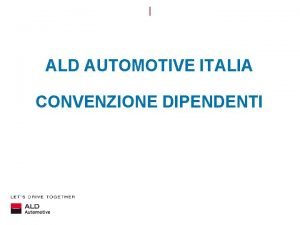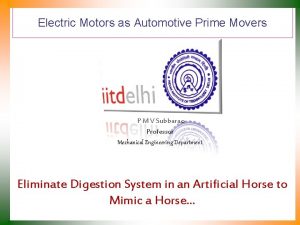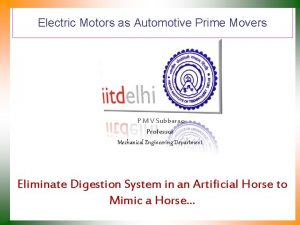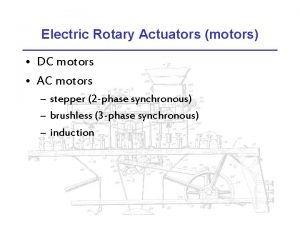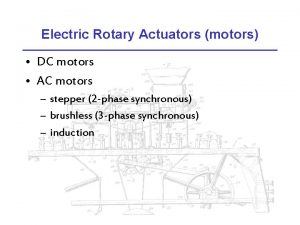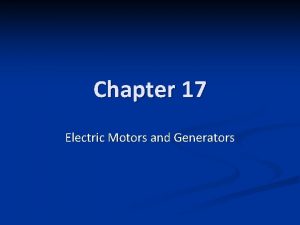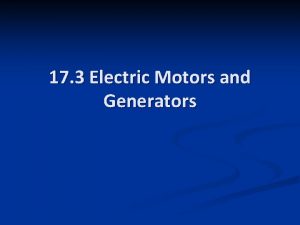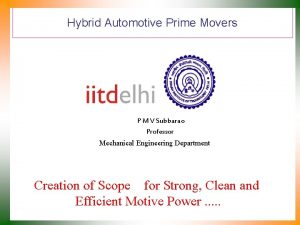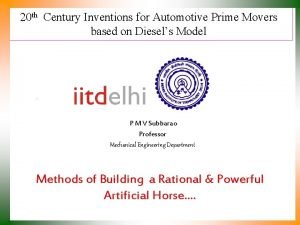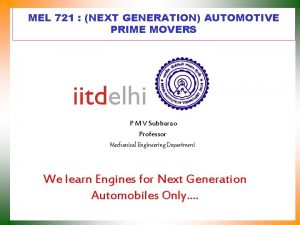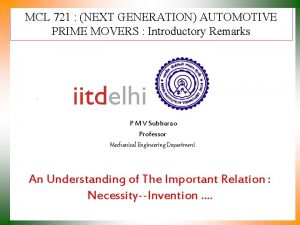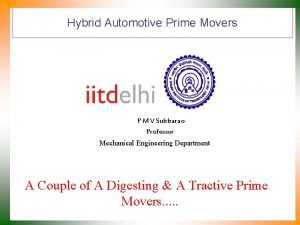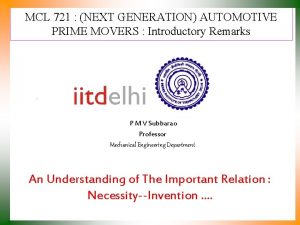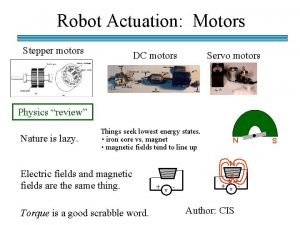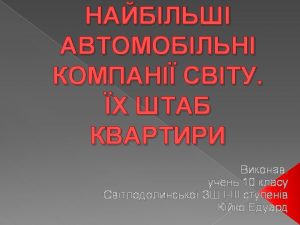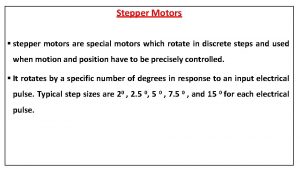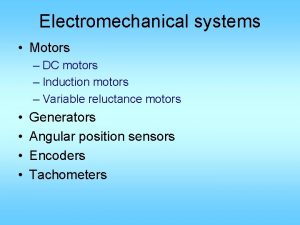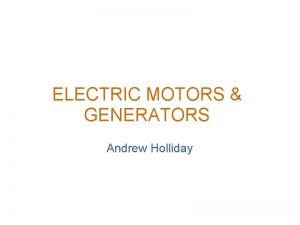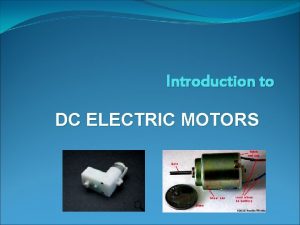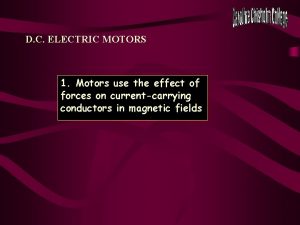Electric Motors as Automotive Prime Movers P M













































- Slides: 45

Electric Motors as Automotive Prime Movers P M V Subbarao Professor Mechanical Engineering Department Eliminate Digestion System in an Artificial Horse to Mimic a Horse…

Travel History of of an Artificial Horse on Busy Roads

Vehicle speed and acceleration/deceleration in an FTP urban drive cycle

Energy Loss : Urban Driving : 3000 CC Engine Vehicle Standby 8% Fuel Tank 100% Engine Aero 3% 16% Engine Loss 76% POWERTRAIN Driveline Losses 3% 13% Rolling 4% Braking 6% VEHICLE-Related

Energy Loss : Highway Driving : 3000 CC Engine Vehicle Standby 0% Fuel Tank: 100% Engine Aero 10% 23% Engine Loss 77% POWERTRAIN Driveline Losses 4% 19% Rolling 7% Braking 2% VEHICLE-Related

Low Irreversibility Prime Movers Combustion Engines Fuel Engine Transmission Battery Electric Battery Motor/ Generator Transmission

The Importance of Electric Vehicles • Electricity can become cheaper than fuel. • Electricity can come from renewable resources such as solar and wind power. • Electric cars pollute less than gas-powered cars. • Electric cars may require less maintenance than fuel-powered cars. • You don't even need to get your oil changed every 5, 000 km! • By using domestically-generated electricity rather than relying on foreign oil, A country can become more independent.

Energy Loss : City Driving – Electric Vehicle 90% Batteries 100% 76% Motor Driveline Motor Loss 10% Driveline Losses 14% POWERTRAIN Aero 29% Rolling 35% Braking 11% VEHICLE-Related

Mine to Wheel Efficiency Mine-to-Tank Generation 33% Transmission 94% Tank-to-Wheels 31% Refining 82% Transmission 98% 80% Plug-to-Wheels 76% 23% 76% Pump-to-Wheels 16% 80% = 23% 16% = 13%

Another Major Suitability Characteristic of Resource to Vehicle

Additional Inertial Losses in EVs Gasoline : 1 kg ~ 5. 4 MJ of Mechanical energy Batteries ~1 Li-ion battery (Car battery size) 17. 9 kg 2. 9 litre

Modern compact Batteries

Energy Flow of A Battery Electric Vehicle

Present and Future configurations for an Electric Vehicle

Resistance & Power Requirement at Wheels : City Driving

Motors in 2017 EVS • Tesla Models S & X : Three phase, four pole AC induction motor with copper rotor Drive inverter with variable frequency drive and regenerative braking system.

The Model X's all-wheel drive system uses two motors (one for the front and the other for the rear wheels). The Tesla Model X 100 D features an official EPA rated range of up to 295 mi, and a European NEDC testing cycle estimated range of 565 km.

Characteristics of A Typical variable-speed electric motor The range of the constant power operation depends primarily on the particular motor type and its control strategy.

Speed Ratio of Typical variable-speed electric motor • At the low-speed region the motor has a constant torque. • The maximum speed at which a motor generates a constant (maximum) torque is known as base speed. • In the high-speed region the motor has a constant (maximum) power. • The highest speed at which the motor generates constant maximum power is known as maximum speed. This characteristic is usually represented by a speed ratio x, defined as the ratio of its maximum speed to its base speed.

Performance of an Electric Motor

Performance of A Direct Powered Electric Vehicle

Speed ratio & Speed–torque profile of a 60 k. W electric motor X=6 X=4 X=2

Tractive effort and power versus vehicle speed with different Motors

Energy Flow of A Battery Electric Vehicle

Torque Requirement at Wheels : City Driving : Need for A Gear Box Instantaneous. Tractive Effort demanded by a vehicle):

Tractive effort vs. vehicle speed with a traction motor of x =2 and three-gear transmission

Tractive effort vs. vehicle speed with a traction motor of x =4

Matching of Motor : Powertrain • • • On field electric vehicle powertrain consists of An inverter, An AC induction motor, a reduction gear differential, drive shaft and wheels. The conversion from electrical energy to mechanical energy is not 100% efficient. • The energy losses within the powertrain have to be considered. • The motor and inverter losses are considered together, as it is difficult to determine them individually.

Distribution of Energy Losses in Powertrain • The energy loss can be divided into four parts: copper loss, iron loss, friction and windage loss and stray loss. • Each type of energy loss is determined by different factors, which makes it difficult to be calculated by physical or mechanical laws and also detailed information on the motor is required. • To determine the power loss, a dynamometer test is done. • The motor loss, inverter loss and powertrain friction loss are considered together as the powertrain loss and an empirical equation is used to describe this.

The Dynamometer Tests • Constant vehicle speed Test • Constant Power Test • Constant Torque Test

Motor Power Vs Wheel Power

Motor Power Vs Power Train Losses

Energy Efficiency of Power Train

Electro-chemistry of Battery

Details of A Typical EV Battery

Details of A Typical EV Battery

A typical model of the charge/discharge profile of a Li/Li. Co. O 2 full cell. Fluid,

Battery model The 85 k. Wh battery pack weighs 540 kg and contains 7, 104 Lithium-ion battery cells in 16 modules wired in series.

Energy Consumption • The energy consumption per unit distance in k. Wh/km is generally used to evaluate the vehicle energy consumption. • Energy consumption is an integration of the power output at the battery terminals. • For propelling, the battery power output is equal to resistance power and any power losses in the transmission and the motor drive, including power losses in electronics. • The power losses in transmission and motor drive are represented by their efficiencies ηt and ηm respectively. • Thus, the battery power output can be expressed as

City Cycle : Total traction energy and energies consumed by drags and braking

Regeneration • The major advantage of EV is the possibility of regeneration during breaking. • When regenerative braking is effective on an EV, a part of that braking energy is recovered by operating the motor drive as a generator and restoring it into the batteries. • The regenerative braking power at the battery terminals can also be expressed as where road grade or deceleration (d. V/dt) or both of them are negative. α (0 < α <1) is the fraction of the total braking energy that can be applied by the electric generator, called the regenerative braking factor

Net Energy Consumption • The regenerative braking factor α is a function of the applied braking strength and the design of the power train. • The net energy consumption from the batteries is

Travel Range • The travelling distance between two charges is called effective travel range. • This is determined by the total energy carried by the batteries, the resistance power, and the effectiveness of the regenerative braking (α). • The efficiency of a traction motor varies with its operating points on the speed–torque, where the most efficient operating area exists. • In power train design, most efficient area should overlap with or at least be as close as possible to the area of the greatest operation.

Functional Block Diagram of A Typical Electric Propulsion System

Energy and Power Needs • • Rate is a problem. Example: refill a gas tank with 15 gal in 5 min. The energy rate is roughly that of 20 major campus buildings! It is costly and problematic to fill batteries quickly.
 What is prime mover in mechanical engineering
What is prime mover in mechanical engineering Wheel hub motors for automotive applications
Wheel hub motors for automotive applications Spike prime fll
Spike prime fll Advanced automotive electronics
Advanced automotive electronics How does a electric motor work
How does a electric motor work Electric motor introduction
Electric motor introduction How are electromagnets used in electric motors
How are electromagnets used in electric motors Jeff bezos prime video prime
Jeff bezos prime video prime Potential energy of capacitor
Potential energy of capacitor Chapter 21 electric charge and electric field
Chapter 21 electric charge and electric field Electric charges and electric forces lesson outline
Electric charges and electric forces lesson outline Electric potential and electric field
Electric potential and electric field Formula for work done
Formula for work done A suitable electric pump in an electric circuit is a
A suitable electric pump in an electric circuit is a Unit of charge
Unit of charge Potential energy in uniform electric field
Potential energy in uniform electric field Chapter 21 electric charge and electric field
Chapter 21 electric charge and electric field Chapter 21 electric charge and electric field
Chapter 21 electric charge and electric field Movers
Movers First way movers
First way movers Family and friends movers
Family and friends movers Canadian association of movers
Canadian association of movers Movers suite
Movers suite El cheapo movers
El cheapo movers The primary movers and shakers of the global economy
The primary movers and shakers of the global economy Starter mover flyer ket, pet
Starter mover flyer ket, pet Pengertian stayers dan movers
Pengertian stayers dan movers Joey movers
Joey movers Usaa agent portal
Usaa agent portal Gran piano movers
Gran piano movers Critical thinkers are movers and
Critical thinkers are movers and Control system
Control system Ossj
Ossj Automotive charging systems
Automotive charging systems Mahindra gears
Mahindra gears Automotive training stands
Automotive training stands Qemux
Qemux Automotive measuring tools
Automotive measuring tools What does drum brake diagnosis start with?
What does drum brake diagnosis start with? Global automotive parts miami
Global automotive parts miami Write it right bureau of automotive repair
Write it right bureau of automotive repair Mobilitysolutions.aldautomotive.it
Mobilitysolutions.aldautomotive.it True automotive
True automotive The automotive industry in the era of sustainability
The automotive industry in the era of sustainability Coenie vermaak
Coenie vermaak Automotive cluster bulgaria
Automotive cluster bulgaria
